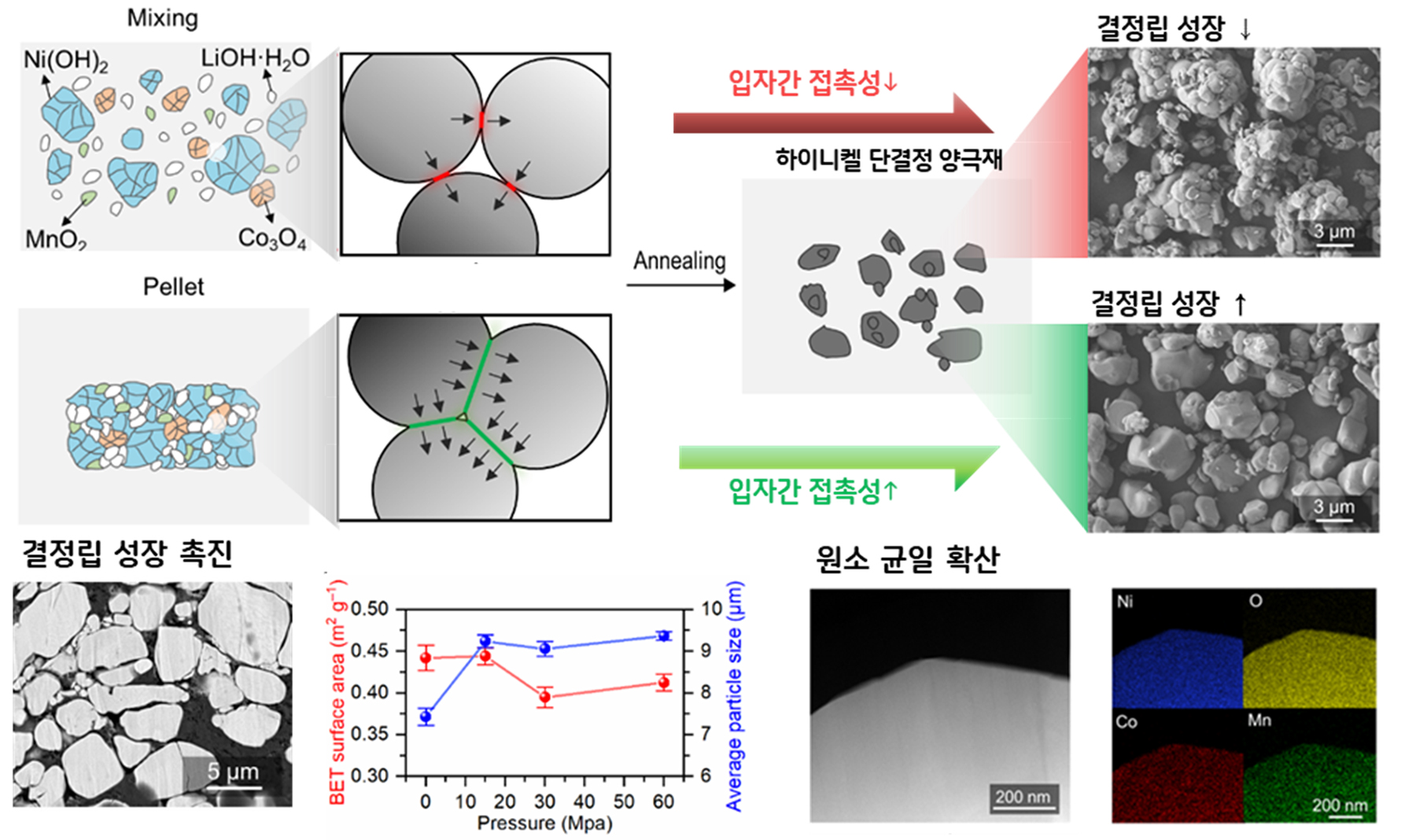연구/산학
PKNU Research 1000
| Ko Min-Seong | Proposed new synthesis method for cathode material | |||
| 작성자 | 대외협력과 | 작성일 | 2023-05-30 |
| 조회수 | 1088 | ||
| Ko Min-Seong | Proposed new synthesis method for cathode material | |||||
 |
대외협력과 |  |
2023-05-30 |  |
1088 |
Prof. Ko Min-Seong proposed new synthesis method for cathode material
- published in <Journal of energy chemistry>

△ A conceptual illustration of the process of accelerating the growth of crystal grains and the uniform diffusion of elements according to the improvement of inter-particle contact.
Pukyong National University announced that a research team of professor Ko Min-Seong (dept. of metallurgical engineering) presented a new synthesis method for the high-nickel ternary 'LiNixCoyM1-x-yO2 (M=Mn or Al, x≥0.8)' anode material used in next-generation batteries such as secondary batteries.
The research team consisting of professor Ko Min-Seong and professor Chae Soo-Jong (dept. of industrial chemistry) from Pukyong National University, dr. Yoon Moon-Soo from the Massachusetts institute of technology (MIT) and dr. Hwang Jae-Seong (graduated from UNIST) proposed a new dry synthesis method that can produce a single crystal cathode material with only a single heat treatment without the co-precipitation process required for precursor synthesis of NCM (nickel cobalt manganese), a high-nickel cathode material composed of 80 percent nickel.
High-nickel cathode material is a next-generation active material capable of realizing high capacity and is receiving great attention from the battery industry. However, since the nano-sized particles are in the form of polycrystals in which nano-sized particles are aggregated in a spherical shape, microcracks are formed inside the particles during charging and discharging, resulting in a rapid decrease in lifespan.
Several studies are currently being conducted to synthesize high-nickel cathode materials in a single crystal form rather than a polycrystal form, but in the case of single crystal synthesis, it is known that it is difficult to implement performance due to non-uniform distribution of elements and difficult crystallinity stabilization.
To solve this problem, professor Ko's research team developed a new process called 'PAMD (pelletization-assisted mechanical densification)' to improve the diffusion of elements and the growth rate of crystal grains.
As a result, it was confirmed that the elements were uniformly distributed and the crystallinity was stabilized in the single crystal cathode material. In addition, by preventing the formation of micro-cracks, it showed 18 percent improved lifespan compared to conventional polycrystalline cathode materials even after 100 charge and discharge cycles.
Professor Ko said, "I expect that the high-capacity next-generation cathode material produced by applying the new development process will be able to reduce the unit cost, and I expect that it can be applied not only to lithium secondary batteries but also to all-solid-state batteries."
As for this research, it was conducted with the support of the National research foundation of Korea and was published in <Journal of energy chemistry> (IF=13.599), a renowned international academic journal in the field of materials and energy in April.